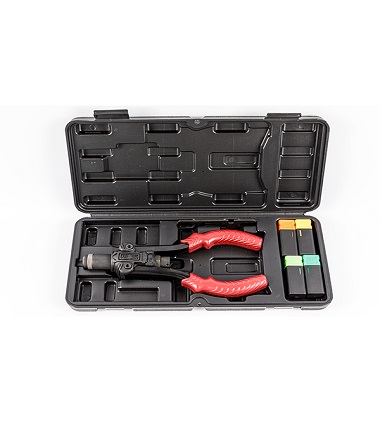Rivet nuts are a simple, economical way to fasten thin materials. They are available in a wide variety of styles, sizes, and threads. In general, they provide a strong threaded anchor point in thin substrates. However, it's important to choose the right type of tool for your needs.
There are three main types of rivet nut tools. These include hand, pneumatic, and hydropneumatic. Hydropneumatic tools utilize a combination of hydraulics and compressed air. The tool's mechanism compresses the rivet nut wall, which forces the insert to "bite" into the work piece. It's also recommended that operators avoid overtightening the rivet nut.
Hand tools are great for smaller production quantities. They feature comfortable rubber grips and aluminum construction. Manual tools offer a lower cost option. However, they require inserting, collapsing, and reinstalling.
Pneumatic and hydropneumatic tools offer a variety of options. These include pull to pressure, push to pressure, and spin-pull. Each of these types has its own advantages.
Pull-type tools are great for installing cross nuts, but they only do one type of thread. To minimize damage, make sure that the drill bit is larger than the rivet nut's threaded hole.
Rivet nuts are a great alternative to clinch studs in blind applications. They're easy to install and they provide the strength of a two-piece fastener.
For heavier duty applications, there are full hex rivet nuts. Their hex-shaped shank provides excellent spinout resistance. With a pre-bulbed shank, they're ideal for a wide range of materials.
 Rivet Nut Column Gun-BT701
Rivet Nut Column Gun-BT701 